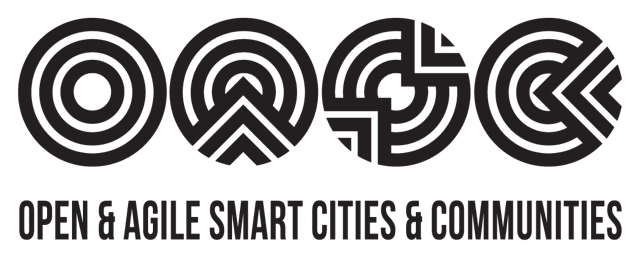If you work in local administration and are just starting to explore the smart city concept, you might find the landscape a bit complicated. That’s why we thought we’d create a series of articles explaining some of the concepts around digital transformation that you might have heard of, but are not quite clear about. We’ll kick off this series with a brief introduction to open data.
Helping cities in their digital transformation journey is what OASC is all about. We have member cities of all shapes and sizes that want to harness the power of digital to create a better everyday for their citizens. And it all starts with how data is handled.
One of the things that comes with modern life is coming to terms with the fact that a lot of data is gathered about the places we live in. Open data aims to make all that information available for others to re-use.
“Open data is one of the key concepts of digital transformation that’s close to the philosophy of OASC. We want to open up data, so that it’s as structured and as interoperable as possible,”
Nils Walravens, Senior Researcher at imec-SMIT and the Free University of Brussels, explains. Nils is a member of OASC’s Board of Directors.
What makes data open?
According to Nils, there are three principles underlying open data. “First, open data means that the data is available and accessible, so that people can find them. Second, data should also be made available for re-use or redistribution, so that new services or applications can be built on top of them. Third, everyone should also be able to reuse the data, even for commercial applications.”
“Open data is not a new concept, but a lot of work still needs to be done. Using open data should in some way be a reflex for local administrations. It is something that ideally should be included already in the procurement process. Standards do have to be set, and we understand how it can be tricky for governments who don’t have them yet. It could even be a chicken-and-egg situation in some cases, with governments wanting to see results before investing,” he notes.
Despite these challenges, using open data brings many benefits to organisations that adopt it. “Using open data can increase efficiency within local governments, because the data no longer needs to be distributed across departments. It also creates awareness about working with data by encouraging dialogue among different departments on how to coordinate all the information being gathered, for example. Open data can boost the local economy, since it helps incentivise the development of new services or applications that weren’t possible before because the data was not available. Better transparency likewise comes from using open data because it means that citizens have more and more information about how government works or how taxes are spent. This could lead to better participation in government and kickstart new dialogue with constituents.”
A pragmatic approach to delivering services
Nils was coordinator of the Smart Flanders programme, which set out to accelerate innovation in 13 Flemish cities, including Antwerp and Bruges, on the basis of linked open data. Smart Flanders published the Open Data Charter, a set of 20 principles that facilitates re-using open data. “In the data pilots that we ran, we looked at what challenge the cities wanted to solve and we looked at how linked open data can help solve that challenge. We tried to involve the end-users from early on, and tried to identify what services were really needed.”
Nils encourages local governments to start using open data, even via a small initiative. “Taking open data into use doesn’t have to take much time or be expensive. What’s important is to understand its potential, identify an initiative that fits policy goals and collect the data that supports that goal. The data collected can then be made available on the city’s website, such as a CSV file that’s updated regularly, even if it’s only once a year, for example.”
Check out CITYxCITY Academy’s free online course on Open Data for Cities and Communities, developed with Nils Walravens, to learn more.

